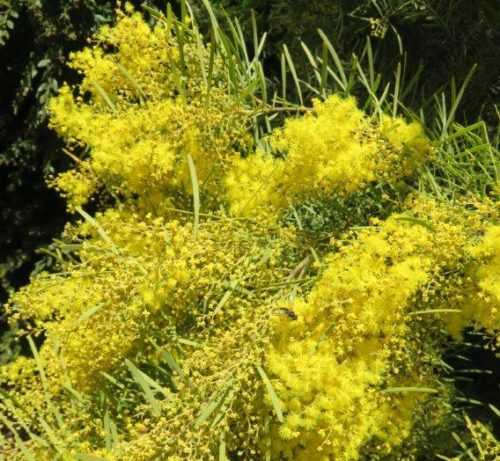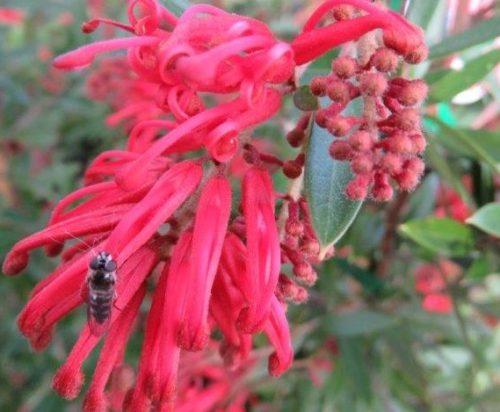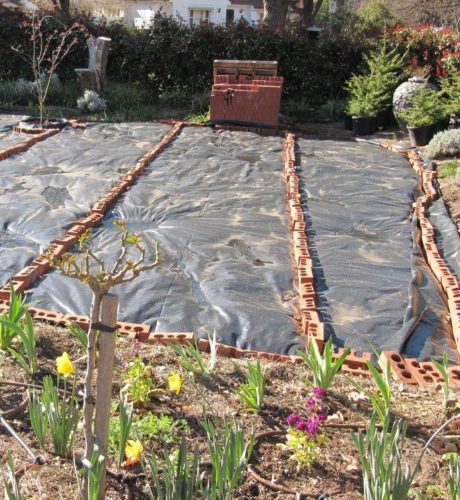
Gardening writer CEDRIC BRYANT is looking forward to the imminent arrival of spring and his favourite blackbird.
SPRING is in the air and will quite possibly be the best one for years.
With all the rain over winter, deciduous trees and shrubs heave a huge sigh of relief as the new growth of leaves and blossoms appear.

Wattle Day on September 1 heralds spring with its brilliant, yellow flowers taking us out of the dull, winter days. Most exciting at our place is the arrival of our blackbird, right on time every year, deciding where to build its nest. Many native plants, with their amazing display of rich colours, are blooming such as Grevillea “Crackles”, attracting insects. It’s a great time to visit the Botanic Gardens, now open again with some exciting new areas such as the Banksia Garden.

NOW is the time to start applying mulch, one of the most important tasks in every garden. It may seem early, but we can have surprisingly hot weather, even in late spring. This leads to evaporation and drying out of the soil. As a reminder, our average annual rainfall is 619mm, with the evaporation a staggering 1800mm based on BOM figures. Mulch allows better entry of water into the soil, reducing run-off and retaining moisture around plants. It also lowers soil temperature and reduces weed growth. Soak the ground before applying.
There are many types of mulch available. Eucy chip packs down and is impervious to water; although it’s great for paths in a bush garden. Dyed red wood chips may look good but are really ineffective; mulch should be for the benefit of the plants, not for appearance. Mulch needs to be a minimum of 75mm thick, keeping it back from the stems and trunks of plants. Ideally it should be a mixture of coarse and fine material which will break down over a period of time. It needs to be topped up every few years.

LAWNS can be hard to maintain, requiring a great deal of water, continuous weed control, feeding and mowing. Since the drought in 2003, followed by severe water restrictions, people have been encouraged to reduce lawn size. To kill a lawn organically, without poisonous weed killers, spread black plastic over the grass when the weather warms up, and hold it down with bricks for a few weeks. I never use black plastic under mulch, but on a short-term basis it will get rid of a lawn and the space can then be used for garden beds.
I’VE been asked to recommend a very small hedging plant, similar to buxus or box hedging. The perfect answer is Euonymus japonicus “Tom Thumb”; with its compact growth of 50cm high x 30-40cm wide. The dark green leaves only need an occasional clip if you want it as a formal hedge. Alternatively, leave it to grow into its natural shape, perfect for containers or on a balcony. It is readily available.
OFTEN multi-grafted fruit trees are offered for sale with two or more varieties grafted on the one trunk. The varieties are chosen to cross pollinate. Two points to keep in mind. Firstly, if one of the varieties dies you will lose the cross pollinator. Secondly, depending on the variety, the two growth habits can be quite different, making it difficult to prune for maximum fruiting. If you have space, two separate trees are better.
Who can be trusted?
In a world of spin and confusion, there’s never been a more important time to support independent journalism in Canberra.
If you trust our work online and want to enforce the power of independent voices, I invite you to make a small contribution.
Every dollar of support is invested back into our journalism to help keep citynews.com.au strong and free.
Thank you,
Ian Meikle, editor




Leave a Reply